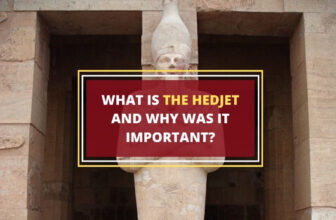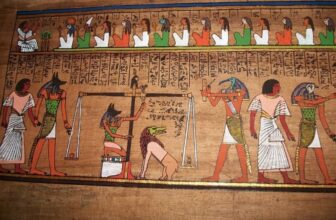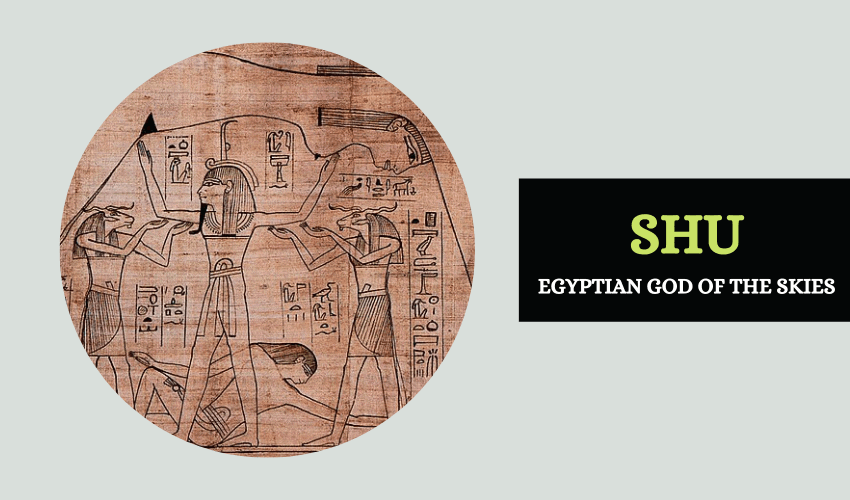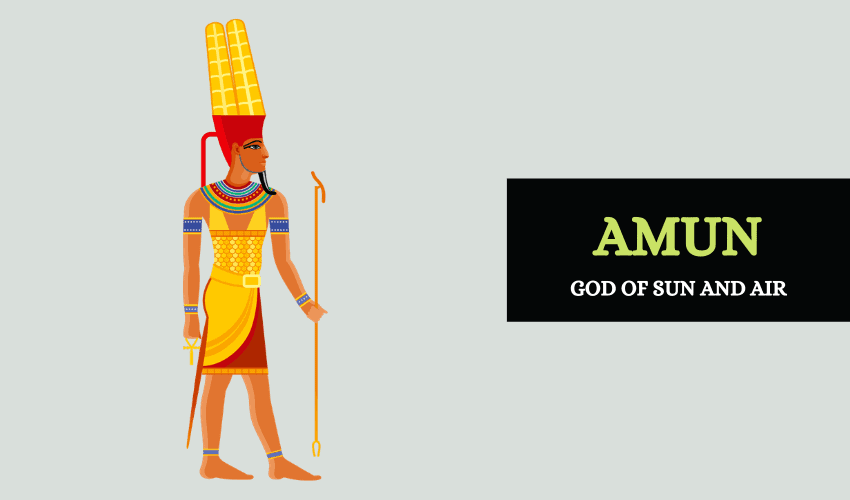
Table of Contents
In Egyptian mythology, Amun was the god of the sun and air. As a primordial deity and king of all gods, Amun rose to prominence during the Egyptian New Kingdom, when he transitioned into Amun-Ra, the creator god.
Let’s take a closer look at Amun and his various roles in Egyptian culture and mythology.
Origins of Amun

Amun and his female counterpart Amaunet were first mentioned in the Old Egyptian Pyramid Texts. There, it is written that their shadows form the symbol of protection. Amun was one of the eight primordial deities in the Hermopolitan cosmogony and the god of fertility and protection. As opposed to the other primordial deities, Amun did not have any specific role or duty.
This made him a mysterious and obscure god. Greek historians pointed out that the name Amun meant ‘the hidden one‘ or the ‘invisible being’. His nature was imperceptible and hidden, as the epithet ‘mysterious of form’ with which texts often refer to Amun proves.
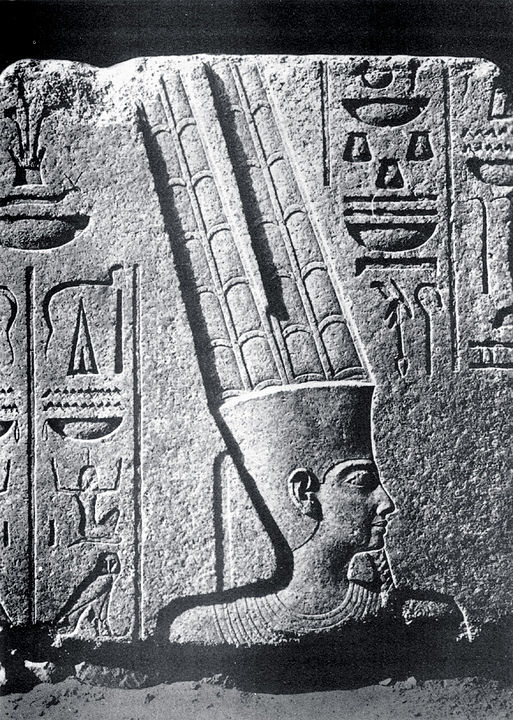
The Rise of Amun-Ra
During the Egyptian Middle Kingdom, Amun became the patron god of Thebes, displacing in the process the local war god Montu. He also came to be associated with the goddess Mut, and the moon deity Khonsu. Together, the three formed a divine family called the Theban Triad, and became the gods of safety and protection.
Amun became increasingly popular during the 12th Dynasty, when four kings took his name when they ascended the throne. The name of these pharaohs, Amenemhet, stood for ‘Amun is the greatest’, and provides little doubt of the importance of Amun.
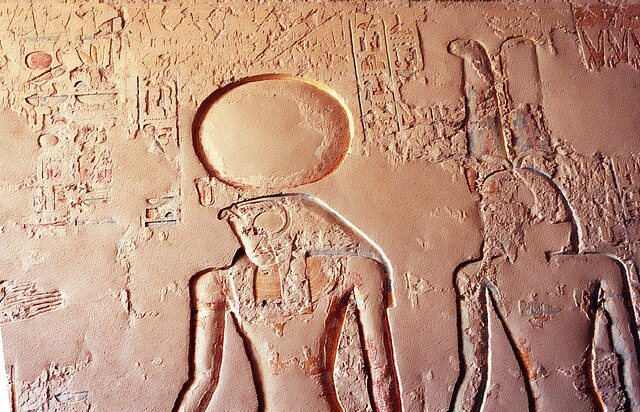
In the New Kingdom the god received the support of Prince Ahmose I. The Prince attributed his success as the new pharaoh of Egypt, entirely to Amun. Ahmose I played an important role in reformulating Amun into Amun-Ra, the creator deity and the king of all gods.
From the 18th Dynasty onwards, the largest Amun-Ra temple began to be constructed, and Thebes became the capital of unified Egypt. Several kings across generations funded the construction of the temple and Amun-Ra became its principal deity.
Amun-Ra’s Roles in Egypt
Amun-Ra had various roles and duties in Egypt. Amun was fused with Min, the ancient god of fertility, and together they came to be known as Amun-Min. Amun also absorbed the traits of Montu and Ra, the gods of war and sunlight. Although Amun was influenced by Atum, the ancient creator god, they continued to remain as separate deities.
Amun-Ra was worshipped by the people of Egypt as both a visible and invisible god.
In his visible manifestation, he was the sun who gave life and nourished all living things on earth. As an invisible deity, he was like the powerful wind that was everywhere, and could be felt, but not seen with the naked eye. Amun-Ra also became a patron god for the less fortunate, and ensured rights and justice for the poor.
Amun-Ra and Aten
Amun-Ra was met with fierce opposition during the reign of king Amenhotep III. The king wanted to diminish the authority of Amun’s priests, as they had accumulated too much power and wealth. To counter this, king Amenhotep III tried to promote the worship of Aten, as a competition and rival to Amun-Ra. However, the king’s attempts attained little success, as the priests of Amun had incredible influence throughout the territory of Egypt.
The son of Amenhotep III, who ascended the throne as Amenhotep IV but later changed his Amunian name to Akhenaten, reiterated his father’s attempts by establishing Aten as a monotheistic god. For this purpose, he shifted the capital of Egypt, founding a new city called Akhetaten, and prohibited the cult of Amun. But these changes were short-lived, and when he died, his successor re-established Thebes as his capital and permitted the worship of other deities. With his death, the cult and worship of Aten swiftly disappeared.
Some historians believe that one of Aten’s priest, Moses, left Thebes to establish a new religion and belief system elsewhere.
The Decline of Amun-Ra
From the 10th century BCE onwards, the worship of Amun-Ra began to witness a gradual decline. Historians assume this occurred due to the increasing popularity and reverence for the goddess Isis.
Outside Egypt however, in places such as Nubia, Sudan and Libya, Amun continued to be an important deity. The Greeks also carried forth the legacy of Amun, and Alexander the Great himself was believed to be the son of Amun.
Symbols of Amun
Amun was represented by the following symbols:
- Two vertical plumes – In depictions of Amun, the deity is represented as having two tall plumes on his head.
- Ankh – He is often shown holding an Ankh in his hand, a symbol that represents life .
- Scepter – Amun also holds a scepter, which symbolizes royal authority, divine kingship and power.
- Criosphinx – This is a ram-headed sphinx, often placed in Amun’s temples and used in processions and celebrations of Amun.
Symbolism of Amun-Ra
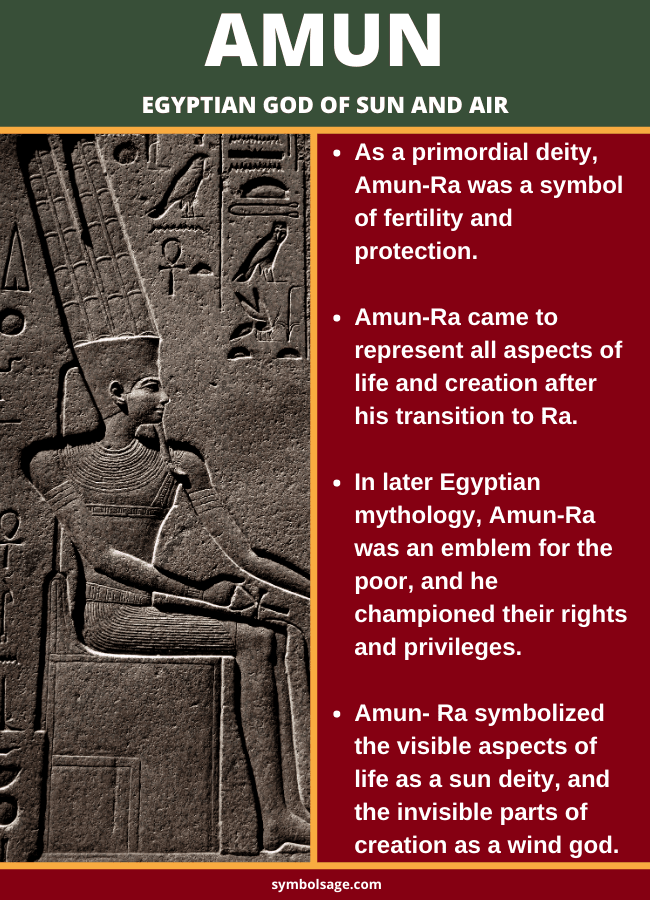
- As a primordial deity, Amun-Ra was a symbol of fertility and protection.
- Amun-Ra came to represent all aspects of life and creation after his transition to Ra.
- In later Egyptian mythology, Amun-Ra was an emblem for the poor, and he championed their rights and privileges.
- Amun-Ra symbolized the visible aspects of life as a sun deity, and the invisible parts of creation as a wind god.
Temples of Amun-Ra
The largest temple for Amun- Ra was built in Karnak, near the southern border of Egypt. However, an even more magnificent shrine, built in honor of Amun, was the floating temple of Thebes known as Amun’s Barque. This temple was constructed and funded by Ahmose I, following his defeat of Hyksos. The floating temple was made of pure gold and had many treasures hidden within.
The moving temple played a significant role in the festivals of Amun-Ra. It transported Amun-Ra’s statue from the Karnak temple to the Luxor temple, for everyone to see the idol and celebrate together. The floating temple was also used to transport the statues of Amun, Mut, and Khonsu from one coast of the Nile to the other.
Amun-Ra in Popular Culture
In movies, television series and games, Amun-Ra appears in various roles. For instance, in the film Stargate, he appears as an alien villain who enslaves the Egyptians. In the videogame Smite, Amun-Ra appears as a powerful sun god with healing abilities. In the animated series Hercules, Amun-Ra is depicted as an influential and mighty creator god.
In Brief
Amun-Ra was a primordial deity and one of the most respected and worshipped gods in Ancient Egypt. His fusion with Ra widened his audience and made him the most popular god of the common people. As the god of creation, he permeated all aspects of Egyptian life including the social, cultural, and religious realms.




